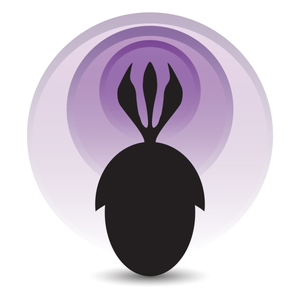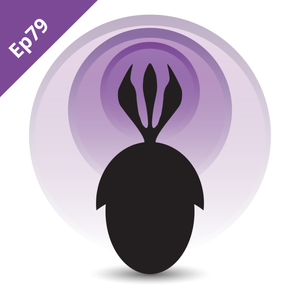
Palaeocast
Palaeocast
All episodes
Best episodes
Top 10 Palaeocast Episodes
Goodpods has curated a list of the 10 best Palaeocast episodes, ranked by the number of listens and likes each episode have garnered from our listeners. If you are listening to Palaeocast for the first time, there's no better place to start than with one of these standout episodes. If you are a fan of the show, vote for your favorite Palaeocast episode by adding your comments to the episode page.

09/27/15 • 48 min
The Symposium of Vertebrate Palaeontology and Comparative Anatomy (SVPCA) annual conference was held at the University of Southampton National Oceanography Centre at the beginning of September. This is the first year we've covered this event, and covered a wide range of topics in vertebrate palaeontology. We spoke to several people, which you can listen to here, including information on Romanian and Hungarian fossils, ceratopsian dinosaurs, ankylosaur histology, sesamoid bones, and more.

Episode 32A: Canids
Palaeocast
08/05/14 • 38 min
We're all familiar with canines (dogs, wolves, jackals, foxs, etc), but these are just only one of three sub-families of the larger canid family to survive to the present day. There were also the Hesperocyoninae and Borophaginae, but what did these other canids look like and why did they go extinct? The canid family also falls within the larger suborder Caniformia which includes skunks, bears and seals, but how are all these related?
We've therefore quite a lot of history of the group to cover before we eventually see Canis lupus familiaris become man's best friend. To talk us through their evolution is Dr Xiaoming Wang of the Natural History Museum, Los Angeles.

Episode 3: Amber and Parasitism
Palaeocast
09/15/12 • 48 min
We got a chance to talk to Dr. George Poinar of Oregon State University about his work in amber. We discuss what it is and how it forms, but also talk about the organisms that are preserved within and the organisms within those organisms. From identifying genuine from fake amber, to parasite behaviour modification and palaeopathology, this episode has it all!

Episode 53: Ankylosaurs
Palaeocast
10/15/15 • 45 min
Ankylosaurs are a group of non-avian dinosaurs best known for their armour, tank-like bodies, and sometimes large tail clubs. First appearing in the Jurassic, they were common in Late Cretaceous ecosystems, with several species known from around the world. But how different were these species really? And just where did they evolve from? What was that tail for?
Dr. Victoria Arbour of the North Carolina Museum of Natural Sciences is one of the leading experts on ankylosaurs, and has published a number of papers, including a recent study on how the tail club evolved. We spoke with Victoria about these dinosaurs and she answered some of these questions for us.

Episode 62: The Tully Monster
Palaeocast
03/18/16 • 48 min

Episode 59: Chemnitz petrified forest
Palaeocast
02/22/16 • 38 min
Beneath the city of Chemnitz, Germany, exists a entire fossilised forest. This whole ecosystem was preserved in life-position during a series of volcanic events. The forest is from the Permian period and thus represents a fantastic snapshot of life during a period where terrestrial fossils are notoriously rare.
Joining us to discuss the flora and fauna of the Permian of Germany is Dr Ronny Rößler, director of the Museum für Naturkunde Chemnitz.

08/29/12 • 60 min
You may be forgiven for having missed the news of NASA's Curiosity rover, or Mars Science Laboratory (MSL), having landed on Mars, given all the coverage the 2012 Olympics had been getting.
To try and even this up, we got in touch with Dr. Leila Battison, a palaeontologist from the University of Oxford, UK, who is currently working at NASA, researching the earliest life in the fossil record and the conditions it needed to survive. We discussed NASA's mission to Mars and explored what kind of things we could expect from any signs of life on another planet based on what we know about early life on Earth from the fossil record.

Episode 72a: Las Hoyas
Palaeocast
01/18/17 • 34 min
Las Hoyas is a Early Cretaceous lagerstätte (site of special preservation) located close to the city of Cuenca, Spain. In this episode, we welcome Ángela Delgado Buscalioni and Francisco José Poyato-Ariza, both from the Universidad Autónoma de Madrid, to discuss the details of this remarkable site. Angela and Francisco have recently edited a comprehensive overview of the Las Hoyas site.
Like most lagerstätten, Las Hoyas is most famous for its vertebrate fossils, but what other taxa can we find there? What was the palaeoenvironment like? And which processes have governed the preservation of the fossils?

Episode 79: Late Devonian Vertebrates
Palaeocast
08/01/17 • 28 min
The transition of fins to limbs is one of the most significant in the history of vertebrate evolution. These were the first steps that would eventually allow tetrapods to go on to dominate so many terrestrial ecosystems. Fossils that help fill the gaps in this crucial time are invaluable, so how do we go about finding them and what happens when we do discover one?
Joining us to give an overview of some of the fossils involved in this transition, and to provide insights into the fieldwork that goes into finding them, is Dr Ted Daeschler, Academy of Natural Sciences of Drexel University.
Show more best episodes

Show more best episodes
FAQ
How many episodes does Palaeocast have?
Palaeocast currently has 230 episodes available.
What topics does Palaeocast cover?
The podcast is about Evolution, Geology, Natural Sciences, Earth Sciences, Podcasts, Education, Science, Paleo and Paleontology.
What is the most popular episode on Palaeocast?
The episode title 'Life On Our Planet 8.4 - Dan Tapster' is the most popular.
What is the average episode length on Palaeocast?
The average episode length on Palaeocast is 44 minutes.
How often are episodes of Palaeocast released?
Episodes of Palaeocast are typically released every 15 days, 1 hour.
When was the first episode of Palaeocast?
The first episode of Palaeocast was released on Aug 28, 2012.
Show more FAQ

Show more FAQ
